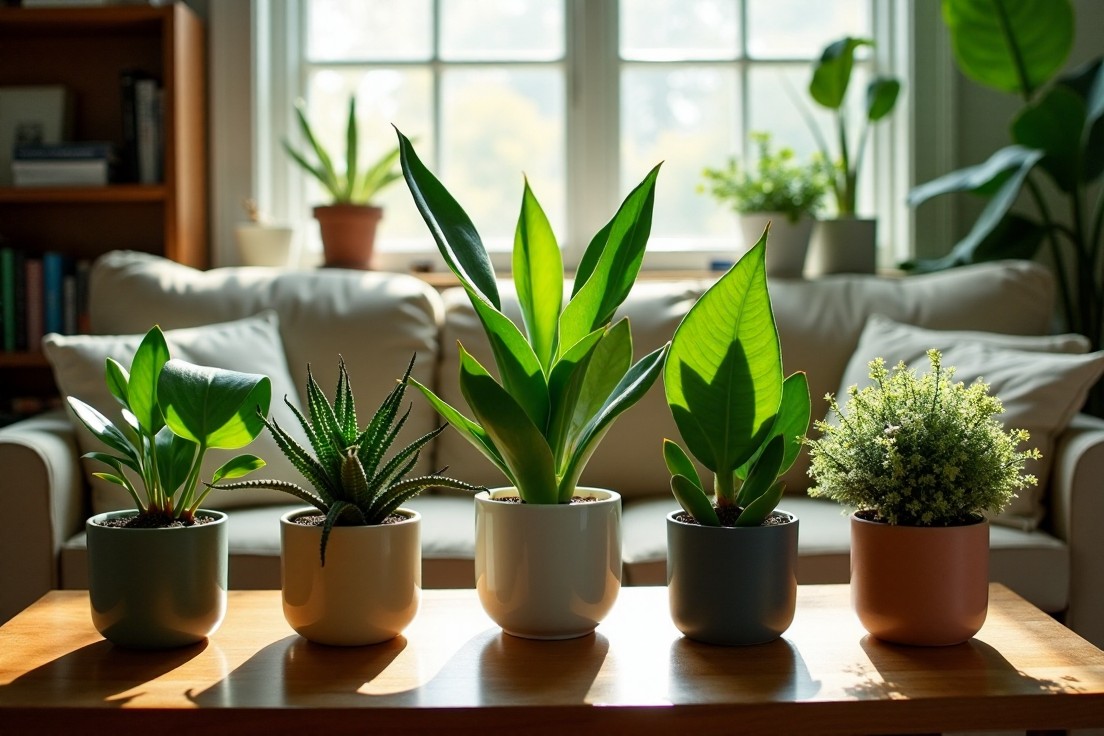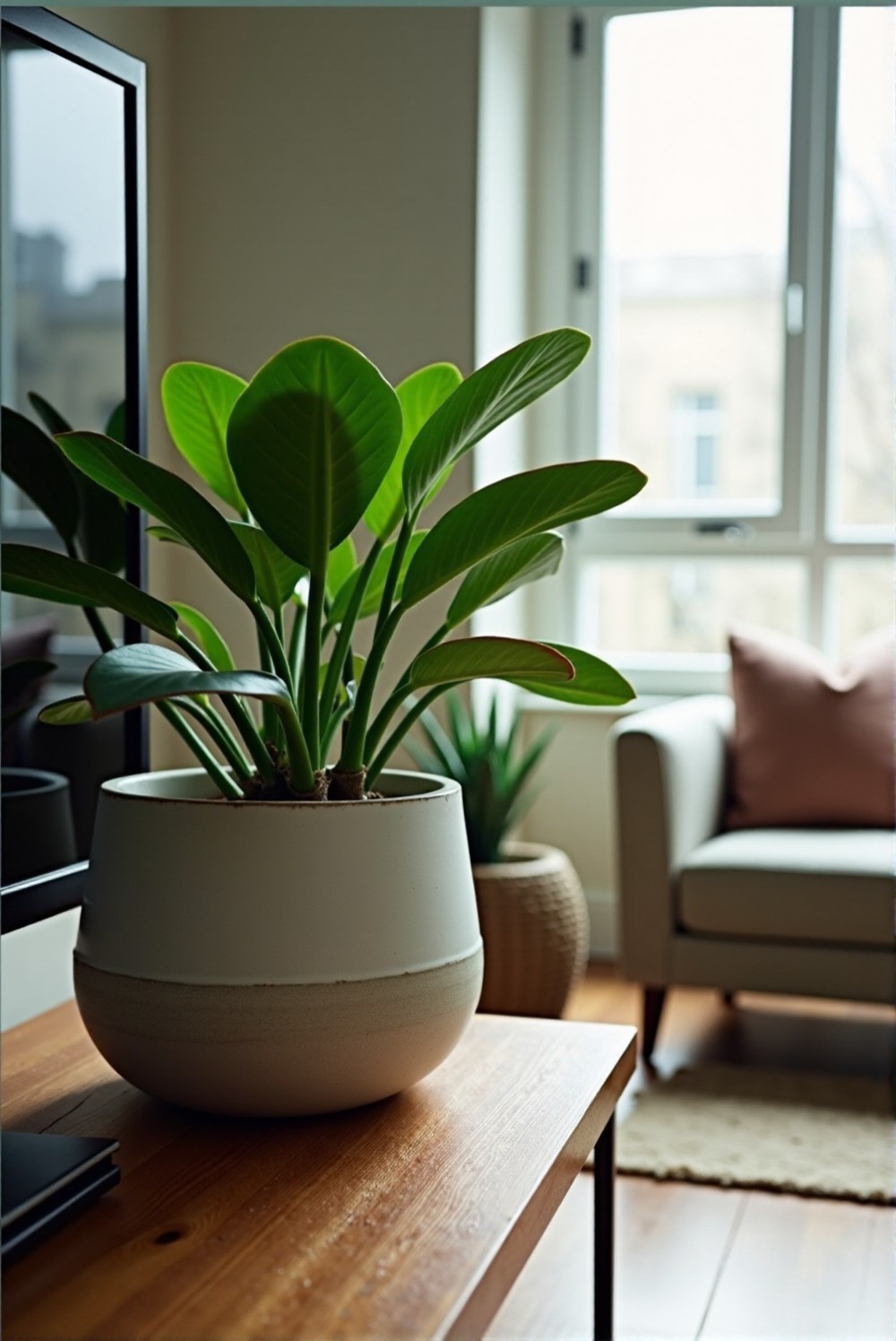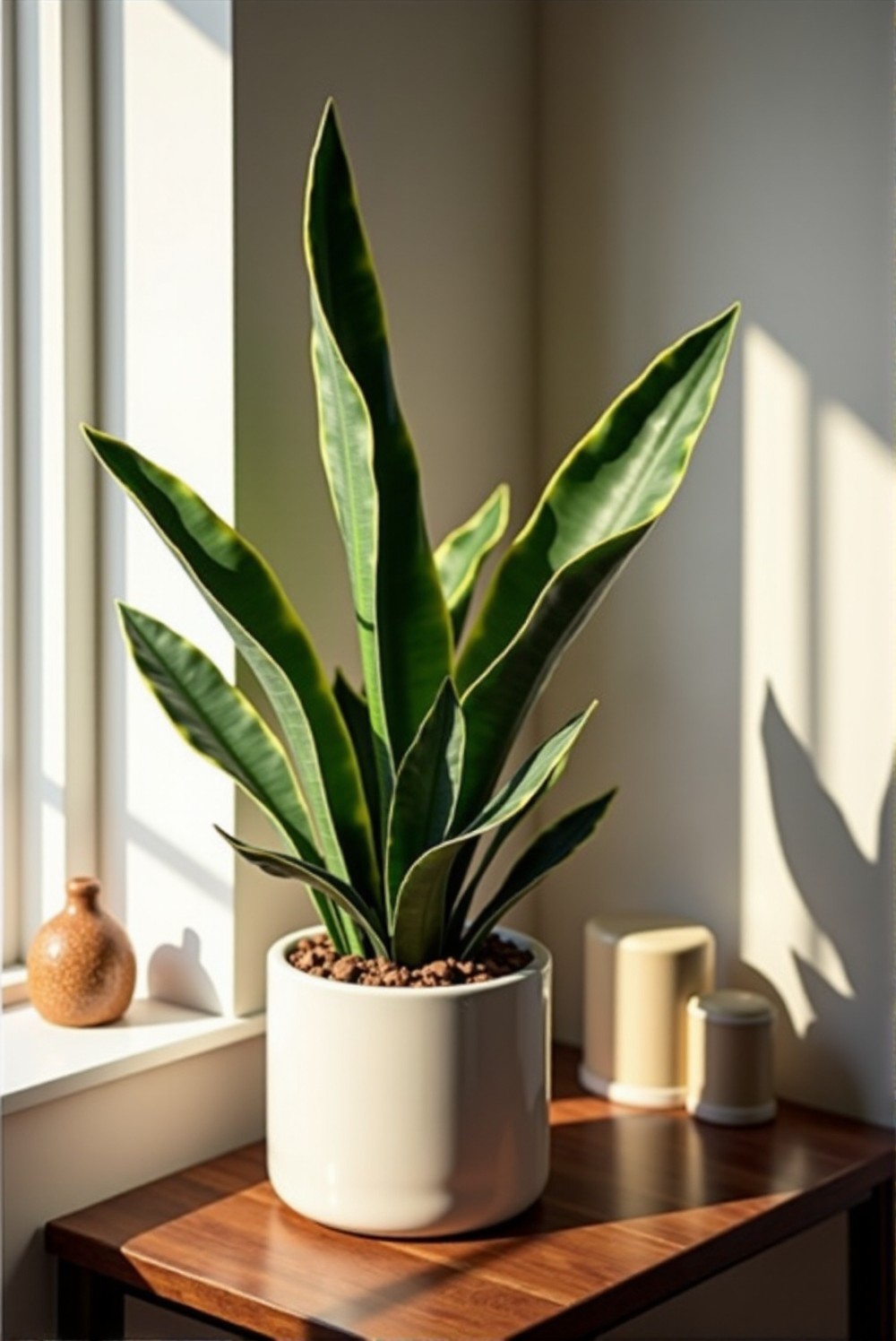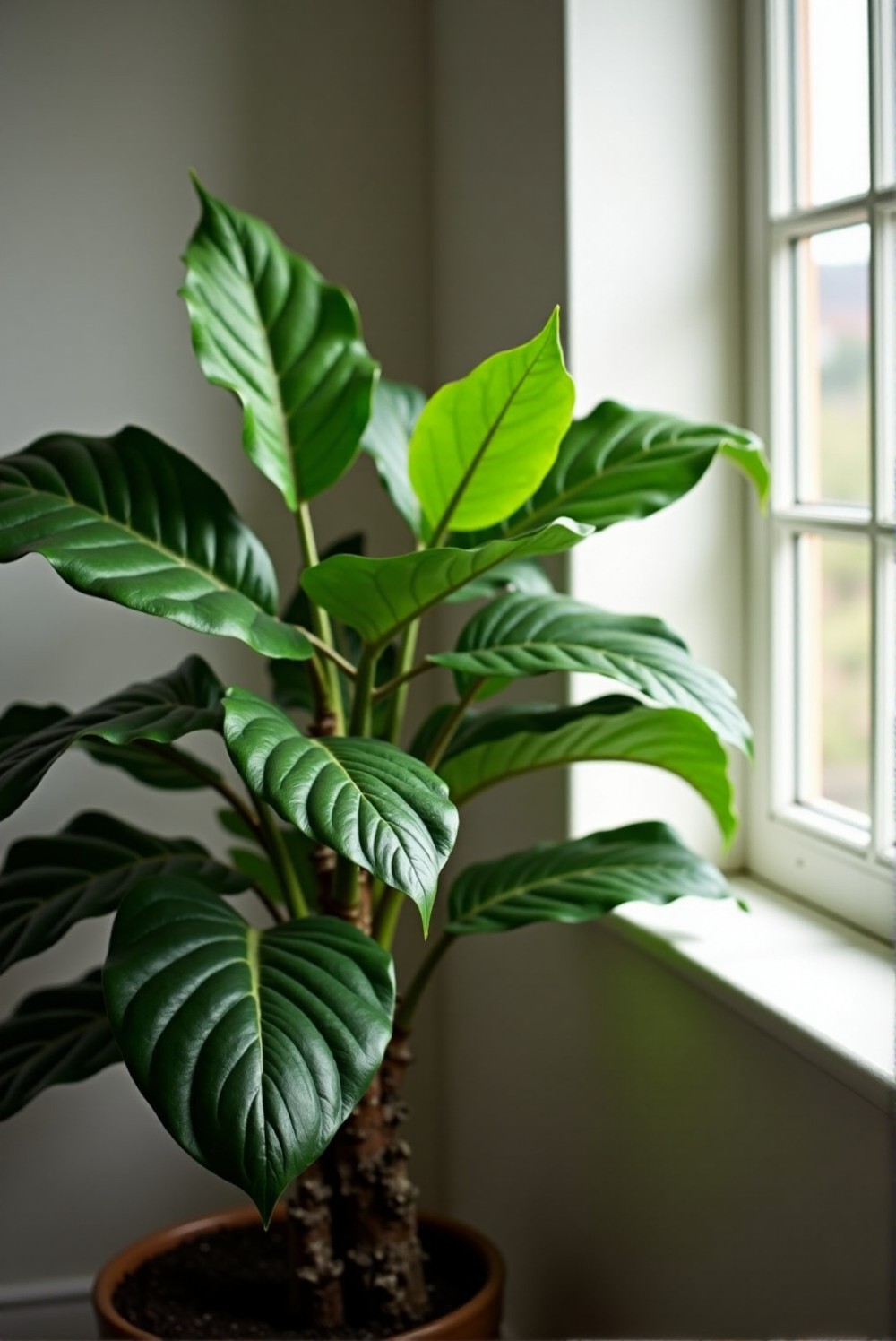
If you’re new to indoor gardening or just want to add some greenery to your home, choosing the right plants can make a big difference. There are many houseplants that are not only beautiful but also easy to care for, perfect for beginners who may lack experience.
Some plants are resilient and can thrive even if you sometimes forget to water them. In this post, we will explore five unconventional houseplants that will brighten your space and help you start your plant journey with confidence.
Whether you have a sunny windowsill or a dim corner, there’s a plant here that will fit right in!
1. Pilea Peperomioides

Pilea Peperomioides, often called the Chinese Money Plant, is popular for good reason. Its round, bright green leaves add a lively touch to any room.
This plant grows quickly, making it a favorite among novice gardeners. Caring for it is simple.
Place it in a spot with indirect sunlight, as it prefers bright but filtered light. Watering should be moderate, allowing the top of the soil to dry out between waterings.
One unique aspect of this plant is its ability to produce pups. These baby plants can be easily separated from the main plant and potted in their own containers.
This makes sharing with friends a fun part of owning a Pilea. Just make sure to give your plant enough room to grow, as they can spread out quite a bit over time.
Sharing Pilea plants with friends can enhance your experience as a plant owner. Here are some important tips to keep in mind:
- Ensure your Pilea has enough space to grow; they can expand significantly.
- Consider propagating your Pilea by taking cuttings to share.
- Pileas thrive in bright, indirect light; perfect for sharing care tips!
- Water your Pilea only when the top inch of soil is dry to the touch.
- Regularly check for pests and give your friends advice on plant care maintenance.
With some basic care, this charming houseplant can thrive and bring a sense of cheer to your home.
2. ZZ Plant

The ZZ Plant, known for its striking glossy leaves, is often a top choice for beginners. Its unique look brings a refreshing vibe to any space, making it both stylish and easy to care for.
This plant is very forgiving of neglect. It thrives in low light, which is perfect for areas that don’t get much sun.
This hardy plant is ideal for those who may not have the time to tend to their greenery regularly. Its resilience and adaptability make it a great choice for various indoor environments.
- Requires minimal watering; allow the soil to dry out between waterings.
- Can tolerate a range of temperatures, making it suitable for different climates.
- Excellent air-purifying qualities, improving indoor air quality.
- Low-maintenance care, perfect for busy individuals or beginners in gardening.
- Available in various sizes and varieties to match your decor and preferences.
You only need to water it when the soil is completely dry, making it ideal for those who may forget to water regularly.
Aside from its beauty and low maintenance, ZZ Plants are known to be resilient.
They can survive in various temperature ranges, from cool to warm. This makes them flexible for placement in homes.
Propagation is also straightforward. You can take leaf cuttings and grow new plants, which can be a fun project if you enjoy sharing plants with others.
While they are generally safe, ZZ Plants are toxic if ingested. Therefore, it’s best to keep them out of reach of pets and small children.
Whether you are a new plant parent or an experienced one, the ZZ Plant can easily become a cherished part of your indoor garden.
3. Snake Plant

The Snake Plant, also known as Sansevieria, is one of the best choices for newcomers to houseplants. Its tall, stiff leaves have a striking look that can enhance any room.
They come in various shades of green, often with yellow or white edges.
This plant is renowned for its toughness.
This table provides information about a particular plant known for its resilience and attractive foliage. The characteristics highlighted below showcase its variations and toughness.
| Feature | Description |
|---|---|
| Color Variations | Various shades of green with yellow or white edges |
| Toughness | Renowned for its durability and resilience in different environments |
| Sunlight Requirements | Thrives in both low and bright light conditions |
| Soil Type | Prefers well-draining soil but can adapt to various types |
| Watering Needs | Requires infrequent watering; drought-resistant |
| Growth Habit | Can grow in various forms, from compact to sprawling |
It requires very little attention and can thrive in different lighting conditions, from bright light to shade. Snake Plants are also forgiving when it comes to watering.
They can go weeks without water, making them ideal for busy lives.
Snake Plants not only beautify your space but also clean the air.
They can help remove toxins, improving indoor air quality. With their unique ability to produce oxygen at night, they can even contribute to a better sleep environment.
Taking care of this plant is easy. Just let the soil dry out between waterings.
It’s better to underwater than overwater. A little bit of sunlight will do, but they are very adaptable to low-light conditions.
If you’re interested in sharing plants or starting your own green collection, propagating a Snake Plant is simple. You can cut a leaf and plant it directly into the soil.
Before long, you’ll have new plants to share with friends.
4. Rubber Plant

The Rubber Plant is a fantastic addition to your indoor space. Known scientifically as Ficus elastica, this plant is valued for its large, glossy leaves that can bring a touch of elegance to your home.
They can grow quite tall, making them perfect for adding height to your plant collection.
This plant enjoys bright, indirect light but can adapt to lower light conditions, too.
It’s important to keep the soil moist but not soggy. Allowing the top couple of inches to dry out between waterings is ideal.
Too much water can lead to root rot, so it’s better to under-water than over-water.
One of the interesting perks of the Rubber Plant is its ability to purify the air.
Proper care is vital for maintaining a healthy Rubber Plant. Here are some key points to consider:
- Ensure potting soil is well-draining to prevent excess moisture.
- Water only when the top inch of soil feels dry to the touch.
- Rubber Plants grow best in bright, indirect light; avoid direct sunlight.
- Regularly wipe leaves with a damp cloth to remove dust and enhance photosynthesis.
- Consider using a humidity tray or misting during dry seasons to promote healthy growth.
It helps remove toxins, which can improve the atmosphere of your home. Another great feature is that you can easily propagate it by taking cuttings from the stem and placing them in water or soil.
This allows you to grow new plants to share with others or to further expand your collection.
Keep your Rubber Plant away from cold drafts, as it prefers a warm environment.
Regularly dusting the leaves can help keep them healthy and attractive. With just a little attention, the Rubber Plant can thrive and add beauty to any room.
5. Spider Plant

The Spider Plant, or Chlorophytum comosum, is a fantastic choice for beginners. It has long, arching leaves that are usually green with white stripes.
This plant is not only beautiful but also easy to care for.
Spider Plants thrive in a range of light conditions, from bright, indirect light to lower light.
This flexibility makes them perfect for any room in your home. They like well-draining soil, which helps prevent roots from sitting in water.
Watering is quite simple. Allow the top inch of soil to dry out before giving it a drink.
Overwatering can be harmful, so it’s best to err on the side of caution.
One of the coolest things about Spider Plants is that they produce small “baby” plants, known as plantlets.
These can be easily removed and potted in their own containers. This not only gives you new plants to enjoy but also makes for a fun way to share with friends.
Spider Plants are also known for improving air quality in your home, making them a great addition to any indoor space.
Regularly trimming any brown tips on the leaves will help keep your Spider Plant looking its best.
These plants are quite resilient, and with a bit of care, they can thrive for years, becoming a cherished part of your plant family.
Frequently Asked Questions
This FAQ aims to answer common questions about the five unconventional house plants described in our blog post, perfect for beginners seeking to start their indoor gardening journey.
What is a Pilea Peperomioides and how do I care for it?
The Pilea Peperomioides, also known as the Chinese Money Plant, is renowned for its round, bright green leaves and fast growth. To care for it, place it in an area with indirect sunlight to ensure it thrives. Watering should be moderate, allowing the top of the soil to dry out between waterings to prevent overwatering.
This plant can produce “pups,” or baby plants, which you can easily propagate and share with friends. Just make sure that your Pilea has enough space to grow, as it can spread out significantly over time.
What makes the ZZ Plant a good choice for beginners?
The ZZ Plant is an excellent option for novice plant caretakers due to its striking glossy leaves and tolerance for neglect. It thrives in low light conditions, making it suitable for indoor spaces that do not receive much sunlight. Watering is minimal; just let the soil dry out completely between waterings.
This hardy plant also improves air quality and has air-purifying qualities, adding to its appeal. However, be cautious since the ZZ Plant is toxic if ingested, so it’s best to keep it out of reach of pets and small children.
How do I care for a Snake Plant?
The Snake Plant, or Sansevieria, is known for its resilience and attractive foliage, making it ideal for beginners. It can thrive in various light conditions, from low light to bright light, and requires infrequent watering, as it is drought-resistant.
These plants not only enhance your space but also contribute to improving indoor air quality. To maintain a healthy plant, allow the soil to dry out between waterings, and when propagating, a simple leaf cutting can produce new plants easily.
What benefits does a Rubber Plant provide?
The Rubber Plant, scientifically known as Ficus elastica, is loved for its large, glossy leaves and elegant appearance. It prefers bright, indirect light but can adapt to lower light levels if necessary. It’s crucial to keep the soil moist without letting it become soggy.
This plant is also known for its air-purifying qualities, making it beneficial for your home environment. Regularly dusting the leaves and allowing the top soil to dry out between waterings will help keep your Rubber Plant looking its best.
Why should I consider a Spider Plant?
The Spider Plant, or Chlorophytum comosum, is a beautiful and easy-to-care-for plant perfect for beginners. It thrives in various light conditions and prefers well-draining soil to prevent overwatering. Additionally, allow the top inch of soil to dry out before watering.
This plant is known for producing “baby” plants, which can be potted separately, making propagation enjoyable. Spider Plants also help improve indoor air quality, adding to their benefits as an indoor plant choice.
Conclusion
Discovering unconventional house plants can make your indoor gardening experience both fun and rewarding. The five plants discussed-Pilea Peperomioides, ZZ Plant, Snake Plant, Rubber Plant, and Spider Plant-are all perfect for beginners and require minimal care.
Each plant not only adds beauty to your home but also contributes to a healthier living environment. They are resilient, adaptable, and perfect for anyone looking to start their plant journey.
Consider trying out one or more of these fantastic plants. You might just find your new favorite green companion!
Happy gardening!